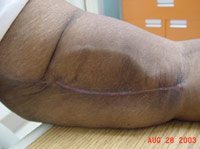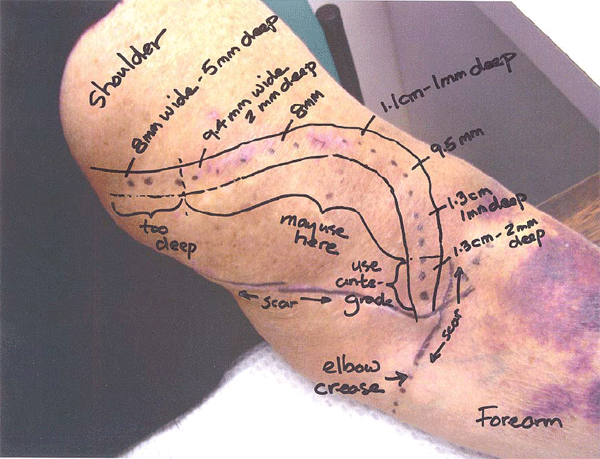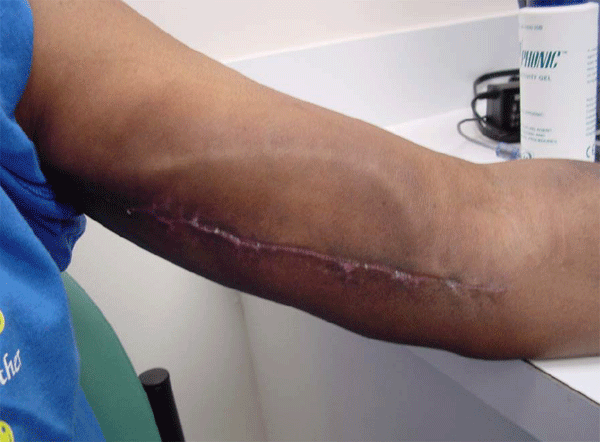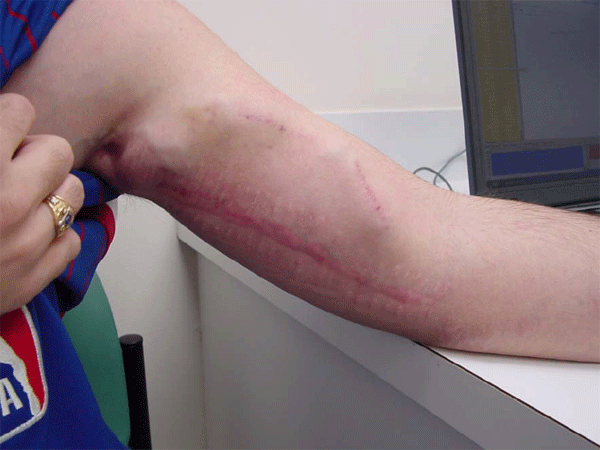|
Gallery: 1 | 2 | 3 | 4 | 5
|
|
| 11 - The transposed basilic fistula pictured above demonstrates that even patients
with thicker and shorter arms can have a fistula |
 |
 |
12 - This superficialized upper arm cephalic fistula was sizable, superficial and had
adequate flow, but was difficult for dialysis personnel to palpate, leading to
multiple misdirected cannulations and associated infiltrations. An
ultrasound-assisted digital photo diagram was created to help guide cannulation
and make everybody's day better. |
| 13 - This transposed basilic fistula is only three weeks old and the incision is
still healing but the fistula itself is usable. The basilic vein is the largest
vein in the arm, and frequently does not need further time to grow to a usable
size. The natural tissues also heal quickly. We have cleared basilic fistulas
for use within ten days from creation when necessary. |
 |
 |
14 - This mighty transposed basilic fistula might never have been born. Months
earlier, radiologists cleaned out this patientís clotted left arm veins, dilated
the narrowings, and put the patient on blood thinners, thus preserving the left
arm for use. Later, a very usable transposed basilic fistula was created from
this once clotted vein. |
| 15 - This patient was previously explored above the elbow for a transposed basilic
fistula, but the basilic vein petered out in the mid upper arm and the operation
was abandoned. The vein in the forearm was huge though, so we moved it
to the upper arm. |
 |
|
Gallery: 1 | 2 | 3 | 4 | 5
|
|







